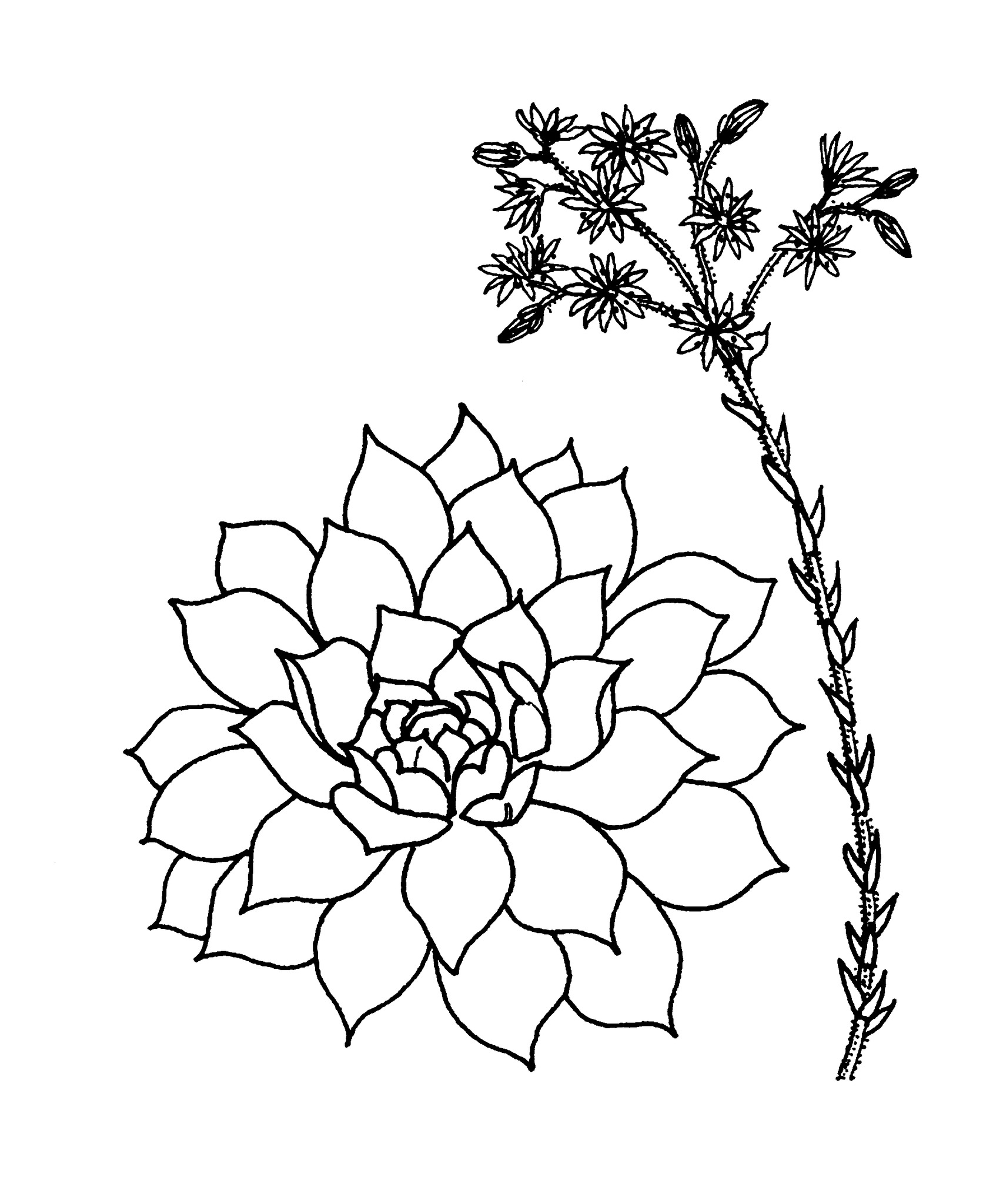
From the Latin semper — always, vivere— to live, referring to these plants as long-lasting.
Succulent, mostly stoloniferous perennial herbs, flowering and fruiting once then dying (monocarpic), with offsets produced from the leaf axils. Leaves pointed and in a basal rosette, not deciduous. Flower clusters on leafy stems. Flowers 8-16-parted, star-like, with yellow to pink, purple or red petals. Stamens twice the number of petals. Carpels same number as petals.
Plants hybridise freely both in cultivation and in the wild. This adds difficulties of identification to a genus that is naturally variable in size, colouring and often hairiness of rosettes.
About 25-50 species (depending on authority) from Europe, W Asia and N Africa.
Generally by offsets, occasionally by seed.
Some species have medicinal uses, most notably S. tectorum, the juice being used to treat inflammations and burns.
Flowers of 8-16 parts; flowers star-shaped, petals entire.
Praeger (1932), Mitchell (1973).
Source: (2002). Crassulaceae. In: . Horticultural Flora of South-eastern Australia. Volume 3. Flowering plants. Dicotyledons. Part 2. The identification of garden and cultivated plants. University of New South Wales Press.
